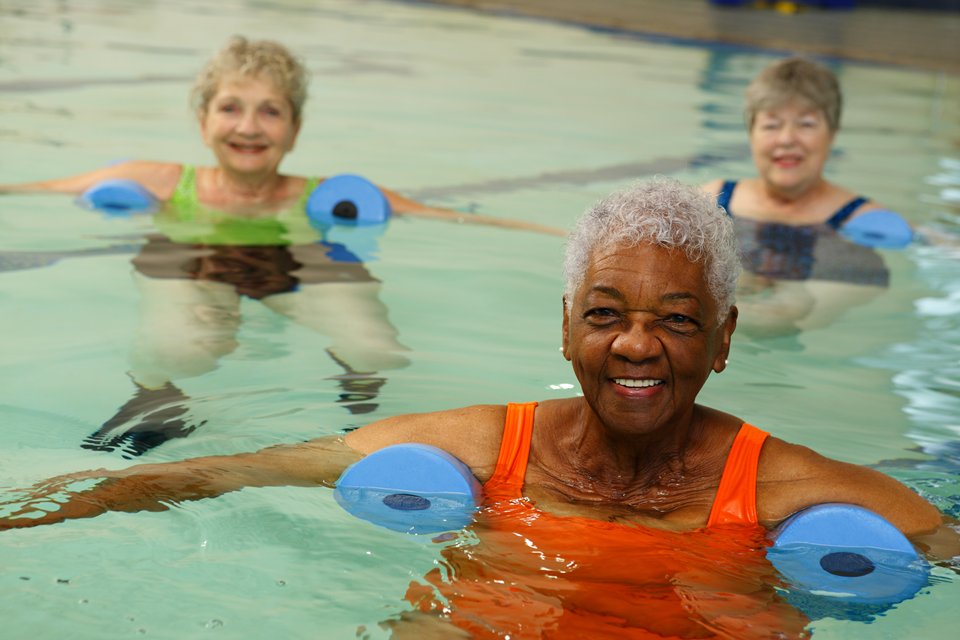Basic physical limitations following breast cancer treatment can have far-reaching consequences that substantially affect how long a patient lives.
According to a new study published online in the Journal of the National Cancer Institute, breast cancer survivors with functional limitations – the ability to perform normal daily activities – may suffer an accelerated rate of death due to overall poorer health, according to researchers.
The scientists found that survivors who reported low physical function after breast cancer treatment have the same risk of dying from breast cancer as those with high physical function but are more likely to die from other diseases.
In particular, investigators found that older women, as well as overweight breast cancer patients, were more likely to experience functional impairments for at least 18 months after treatment.
The research is important because it points to risk factors where, with simple modifications including changes in basic daily physical skills, patient health might be greatly improved.
The impairments, affecting motion, strength and dexterity, include an inability to kneel, to lift items heavier than 10 pounds or to handle small objects, to stand in place, to sit for long periods, to walk up and down a flight a stairs, to walk two or three city blocks.
“Our study provides evidence of why it is important to develop interventions that improve physical function, to mitigate the adverse effects of physical limitations,’’ said Dejana Braithwaite, PhD, Assistant Professor of Cancer Epidemiology at UCSF’s Helen Diller Family Comprehensive Cancer Center. “Intervention strategies – on the part of the individual, the community and the health provider — should emphasize physically active lifestyles.’’
Braithwaite collaborated with researchers at the Kaiser Permanente Northern California, the University of Utah, the University of California, Los Angeles and Berkeley, and Brck University in Canada.
When we talk about improving physical function, we are talking about improving a woman’s ability to perform normal functions of everyday life, like walking around the block, getting up easily from a chair or carrying a heavy bag of groceries. Even these small changes appear to make a difference in a woman’s chance of survival after a breast cancer diagnosis, said senior author, and principal investigator of the Life After Cancer Epidemiology (LACE) study, Bette Caan, DRPH , Senior Research Scientist at Kaiser Permanente Division of Research.
Due to improved detection and treatment, more and more breast cancer patients are surviving for longer periods.
According to the National Cancer Institute, an estimated 2.5 million women with a history of breast cancer were alive in 2006 – most of them cancer-free. The overall five-year survival rate for localized breast cancer is 98 percent, reports the American Cancer Society, while the survival rate for breast cancer that has spread to the chest wall or lymph nodes is in the 80 percent range; at least 25 percent of breast cancer patients whose disease has metastasized survive five or more years.
Despite the improved survival rates, many patients struggle with physical limitations after their initial treatment – as many as 39 percent, according to the new findings – yet little attention has been paid to those limitations and related problems, particularly among older women.
To determine how physical limitations following initial breast cancer treatment affect morbidity, the scientists studied 2,202 women with breast cancer living in California and Utah, questioning them about endurance, strength, muscular range of motion, and small muscle dexterity following initial adjuvant treatment such as chemotherapy, radiation therapy or hormone therapy. The women were part of the Life After Cancer Epidemiology cohort, and were followed for up to 11 years after diagnosis.
Outcomes differed according to disease stage. Women with localized cancer had higher rates of non-breast cancer death due to functional limitations than those with more advanced disease. In addition, women with functional limitations may have poorer treatment tolerance because they are more likely to be older, less physically active, and overweight or obese. As a result, the authors speculate that women with good physical function who tolerated therapy well might be over-represented in the group with more advanced disease.
“There is increasing evidence that regular physical activity, as little as 30 minutes of moderate walking each day, can reduce the risk of breast cancer recurrence,’’ said study co-author Patricia Ganz, MD, a medical oncologist and director of cancer prevention and control at UCSF’s Jonsson Comprehensive Cancer Center. “Women with functional limitations are less likely to be able to maintain regular physical activity and would likely benefit from interventions to reduce their limitations and increase physical activity.’’
Though the researchers did not specifically study the mechanism, they suggest that functional limitations may be associated with chronic inflammation, a key aspect of the immune system’s defenses, which can lead to diminished function of vital organs or systems.
“The hope is that improving physical fitness following initial breast cancer treatment will have long-term benefits,’’ said Braithwaite. “At this point, that’s just a hope and it hasn’t been shown in clinical trials.’’
The research was supported by grants from the National Institutes of Health, National Cancer Institute, Bay Area Breast Cancer SPORE (Specialized Program of Research Excellence), the Hellman Family Foundation, and the Robert Wood Johnson Foundation Health & Society Scholars Program at the University of California, San Francisco and Berkeley. Data were derived from the LACE study, which was supported by funds from the National Cancer Institute and by the Utah Cancer Registry with additional support from the Utah Department of Health.





This Post Has 0 Comments